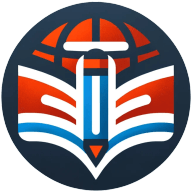4 Edtech Resources that Improve Parent-Teacher Communication
Effective communication between parents and teachers is crucial for student success. This article explores cutting-edge EdTech resources that are revolutionizing how educators and families interact. Drawing on insights from experts in the field, these tools offer innovative solutions to enhance collaboration and engagement in the educational journey.
- Strew Transforms Learning into Shared Conversation
- Discord and LMS Create Living Digital Campus
- ClassDojo Simplifies Communication Across Educational Settings
- TA-DA Books Bridge Home-School Language Gap
Strew Transforms Learning into Shared Conversation
One EdTech resource that has completely changed how I think about parent-teacher communication is Strew, which my sister and I built for home-educating families. It started as a personal project to solve our own problem: how to keep track of all the learning that happens in real life. A child might spend the morning drawing dragons, the afternoon comparing cloud shapes, and the evening dissecting a chicken wing for "fun." We wanted a space to capture that kind of learning without turning it into paperwork. Over time, we realized that Strew also created a surprisingly rich form of communication between families, tutors, and children themselves.
What makes it powerful isn't the technology, it's the visibility. Everyone gets to see the learning as it unfolds, not just the final results. Parents and mentors can leave quick notes, encouragement, or questions that invite deeper thought. It's not "checking up" on kids, it's joining in the curiosity. When a child uploads a photo of their mushroom collection or their first stop-motion animation, and someone comments, "How did you figure that out?", it validates the process in a way that test scores never could. That small exchange changes the rhythm of learning in the household.
Creating Strew also made me think differently about engagement itself. In home education, the parent is often the teacher, so communication can sound redundant. But what I've seen is that tools like this turn reflection into a shared ritual. It helps parents notice patterns, kids feel seen, and extended family members stay connected to what's happening. It's education as a conversation rather than a report.
If I had one tip, it would be to treat technology as a bridge, not a broadcast. Use tools like Strew to start small exchanges that feel human and spontaneous. A comment, a question, a "tell me more about this part." That's where the real communication lives—right in the messy middle of learning, not at the polished end of it.

Discord and LMS Create Living Digital Campus
Discord originally started as an informal experiment to provide a space for students and teachers to chat about what was happening, share updates, and engage in developing community. What surprised us was how quickly parents began to join in. The space evolved into something that was truly a living and breathing digital campus. Much of the conversation happens in close to real-time, rather than waiting for a formal meeting. Parents are able to see how learning moments unfold, ask quick questions, and celebrate wins alongside teachers, instead of separately.
The LMS complements that by picking up where the community leaves off and offering transparency to parents. Parents can see their child's progress, any feedback that informs their child's learning, and be informed about the areas where their child excels and struggles, without waiting for more formal documentation.
In tandem, the two platforms have changed the very way we understand "parent-teacher communication." It's no longer a series of check-ins, but rather an evolving relationship. As a leader, I have come to understand that engagement does not require more meetings, but rather the assurance that there is always an area to feel connected, and that the feeling of connection is ongoing.

ClassDojo Simplifies Communication Across Educational Settings
One of my favorite parent-teacher communication tools is ClassDojo. The majority of their product is free to access, and the platform is so easy to use on both the teacher and parent sides. It makes sharing pictures with parents seamless and awarding participation points to students sustainable. From middle school to high school to private therapeutic day school, I've used this tool across educational environments and found it to be bringing real value every single time.
TA-DA Books Bridge Home-School Language Gap
One of the most powerful "EdTech" resources I've seen for improving parent-teacher communication is actually our TA-DA! screen-free talking books. At first glance, they look like beautiful board books — but when a child touches the page, the book speaks in real voices. The impact on families and teachers is profound.
Parents who don't speak the school's language can suddenly hear the exact pronunciation their child is learning, directly from the book. This gives them confidence to reinforce learning at home without worrying about "getting it wrong." Teachers tell us this has opened doors for families who otherwise felt excluded from language engagement.
For younger children, TA-DA! also makes it easy for parents to share cultural connections and vocabulary from birth. When the child arrives at school, they already have a bridge between home and classroom language. In this way, the books become not just a toy, but a communication tool between educators and families.
What I've learned is that sometimes the best "EdTech" isn't another app or portal — it's a tool that feels simple, human, and joyful, while still being innovative enough to give both parents and teachers a shared resource. For us, it has meant building trust with families and helping schools truly include parents in their child's language journey.


